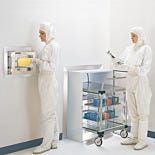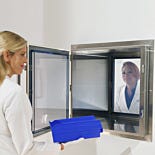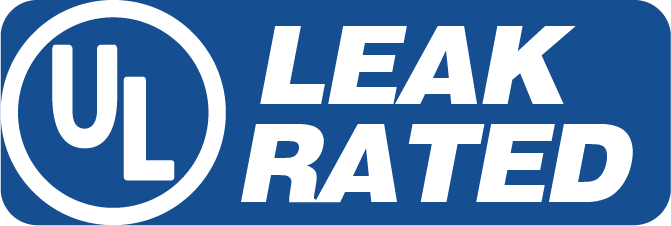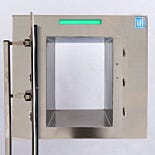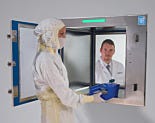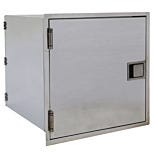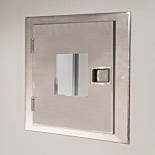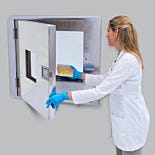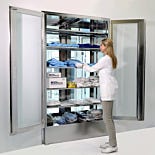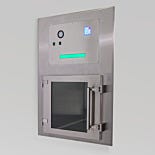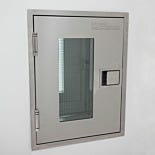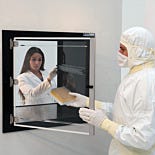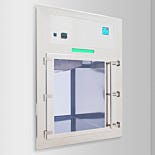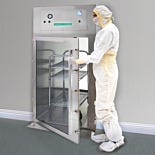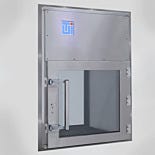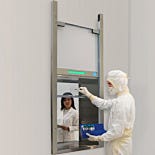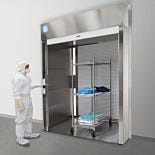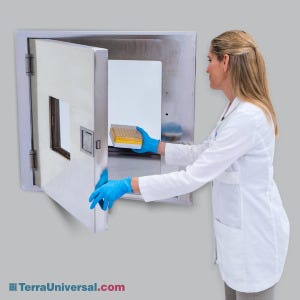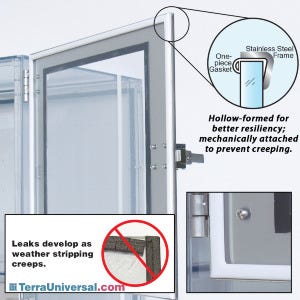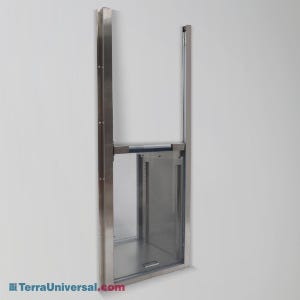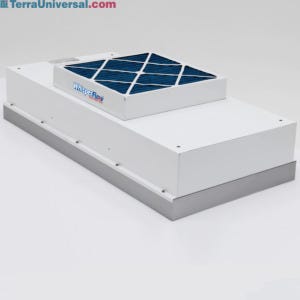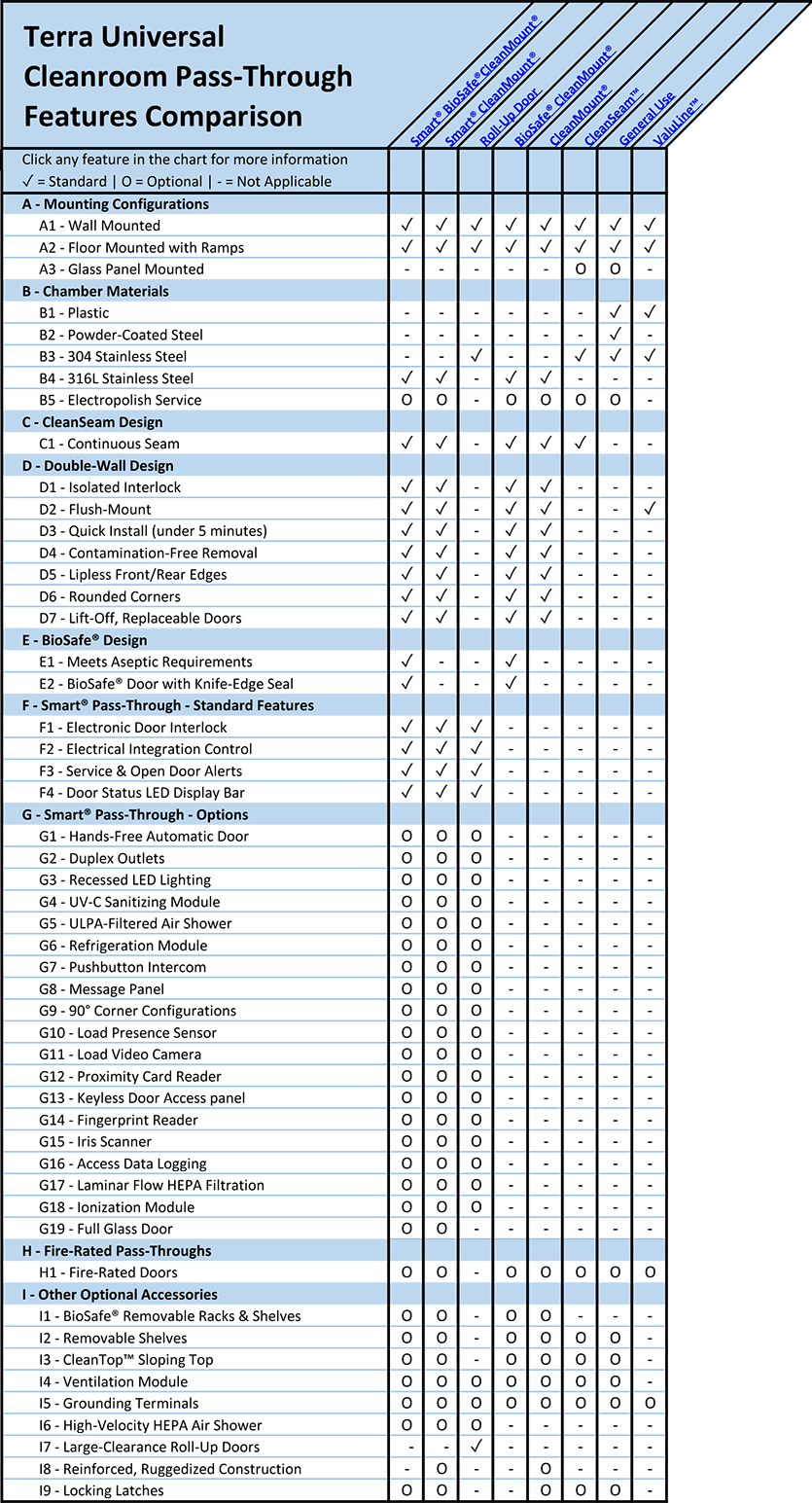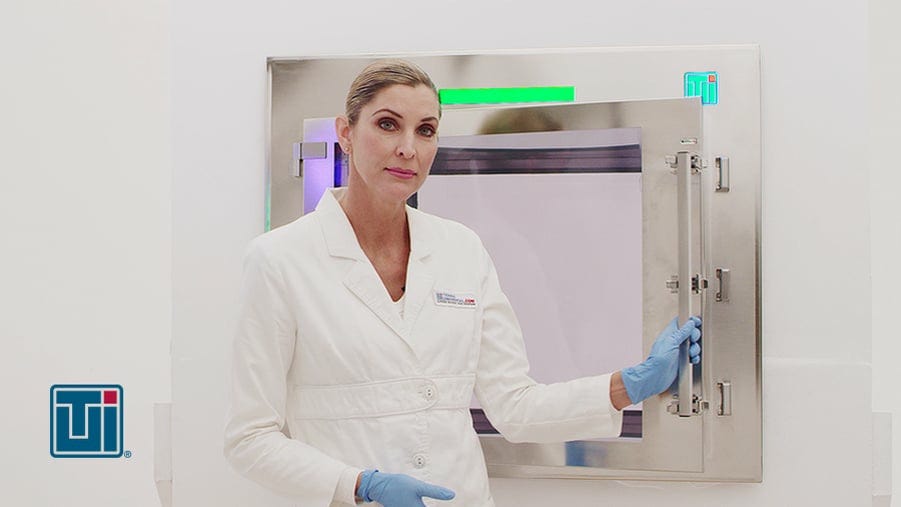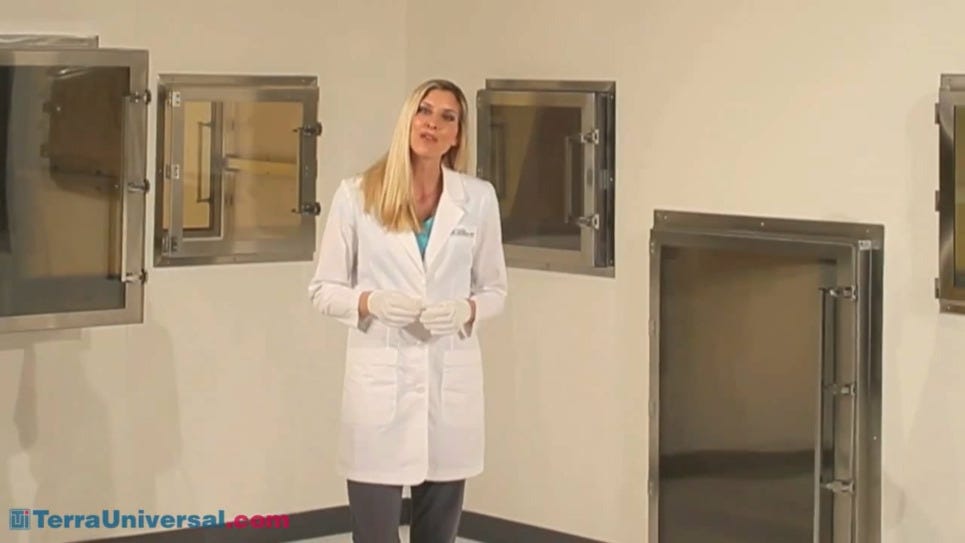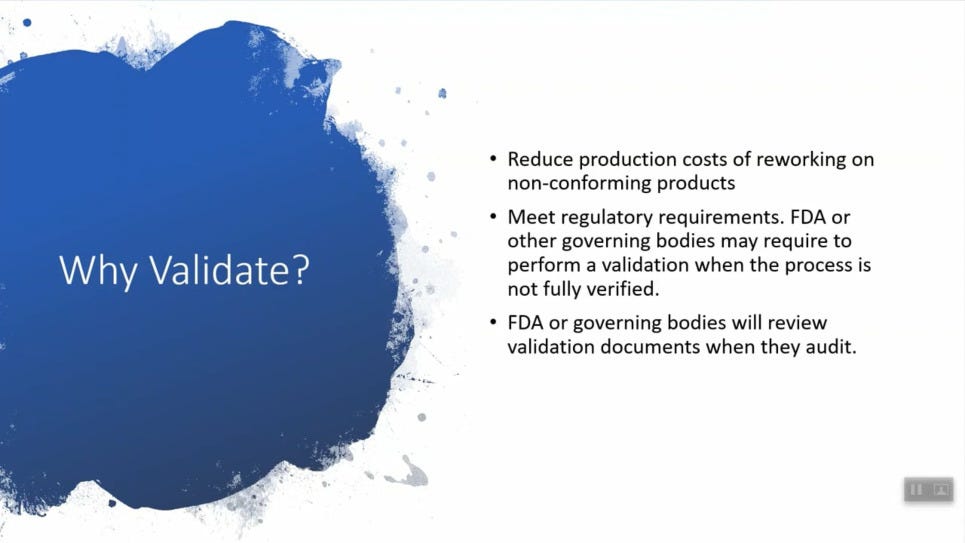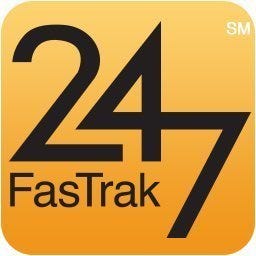Cleanroom Pass-Through Chamber FAQs
How does a pass through cabinet enhance facility operations?
A pass through cabinet is an enclosure installed in a wall between two or more adjacent spaces to facilitate the transfer of materials from one side to the other. Pass through cabinets play a vital role in cleanrooms and other controlled environments. They reduce foot traffic, improve cleanliness, safety, productivity, and much more (read more on the benefits of cleanroom pass throughs). Instead of garbing up to carry materials into a cleanroom, personnel can simply place materials in the pass through transfer hatch for fast, convenient transfer into the cleanroom.
Terra offers many pass through cabinet designs with application specific features to help maximize cleanliness and safety, plus lower operating costs.
How does a pass through door interlock work, and what door interlock options are available?
A defining feature of a cleanroom pass thru is a door interlock mechanism (mechanical or electronic) that allows only one door to open at a time. This creates an air lock for safer transfer by minimizing cross contamination that can occur between rooms when both doors are left open at the same time. Keeping one door closed also helps maintain differential pressure in the room. A large enough hole in the cleanroom can cause a significant drop in differential pressure that could compromise the cleanroom’s cleanliness classification.
Interlock systems can be manual or automatic. A manual interlock system can cause problems because it adds an extra step that is prone to human error. For example, operators need to remember to lock the door after the door is closed. Accidentally forgetting this step can cause frustrating and costly operation delays.
All of Terra’s door interlock systems are automatic, eliminating any possibility of forgetting to lock a door. When one door is opened, the opposite door automatically locks to prevent both doors from being simultaneously opened. Terra offers different door interlock options to match your application’s cleanliness and operating needs. They are rated for millions of operations, ensuring long-lasting and reliable service.
- Conventional automatic mechanical door interlock: The standard mechanical interlock attaches to the chamber interior and automatically engages (lock) one door as soon as the other opens. The design uses a hook mechanism that latches onto the inside of the door. This means the lift latches on the outside can still be operated but the door won't open. While reliable under normal operating conditions, the mechanism can be damaged from excessive force if a user tries to force the door open. This reliable and economical design is most suitable for applications with less stringent cleanliness requirements. They are not recommended for sterile applications because of exposed corners and crevices that can be hard to clean or sterilize. Conventional mechanical interlocks may also obstruct clearance into the chamber since they are mounted inside the chamber. Isolated mechanical interlocks (read below) fix this by mounting the interlock outside the chamber.
- Isolated automatic mechanical door interlock: In double-wall pass through cabinets, the interlock is mounted outside the transfer chamber, leaving interior surfaces smooth, free of obstructions, and easy to clean. This design is ideal for sterile and cGMP applications requiring frequent wipe downs. This automatic interlocking mechanism also uses rigid rods that run through the door and lock into the lift latches. This locks the doors more firmly than the conventional interlock mentioned previously, and prevents users from opening the lift latches on the outside. The double-wall construction also greatly increases the rigidity and durability of the pass through chamber to facilitate installation and prevent warping on larger chambers. Like other mechanical interlocks, though, this design provides no obvious warning indicators of when the opposing door is open or left ajar.
- Electronic automatic door interlock: Accidentally leaving a pass through door open can be an inconvenience in some instances, but also a serious safety hazard in other instances, as it can compromise the integrity of a cleanroom, or expose materials/personnel to harmful conditions. Terra’s electronic automatic interlock (a feature of all Smart™ pass throughs) is also concealed and includes audio and visual status alerts on both sides of the chamber, letting operators know when the opposing door is open. This prevents unsafe conditions and accidental damage of doors/interlocks that can occur when users try to open a locked door with excessive force.
Electronic Smart™ pass throughs introduce many other optional capabilities: access control and logging, HEPA air showers to remove particles from samples, load presence sensing, refrigeration, and more. They are ideal for aseptic applications, chambers with more than 2 doors, and for facilities requiring remote control via building management systems (BMS).
The system is mounted outside the transfer chamber, the same as isolated mechanical interlocks. As long as power is furnished to the chamber, an electronic interlock provides optimal cleanliness and operational versatility.
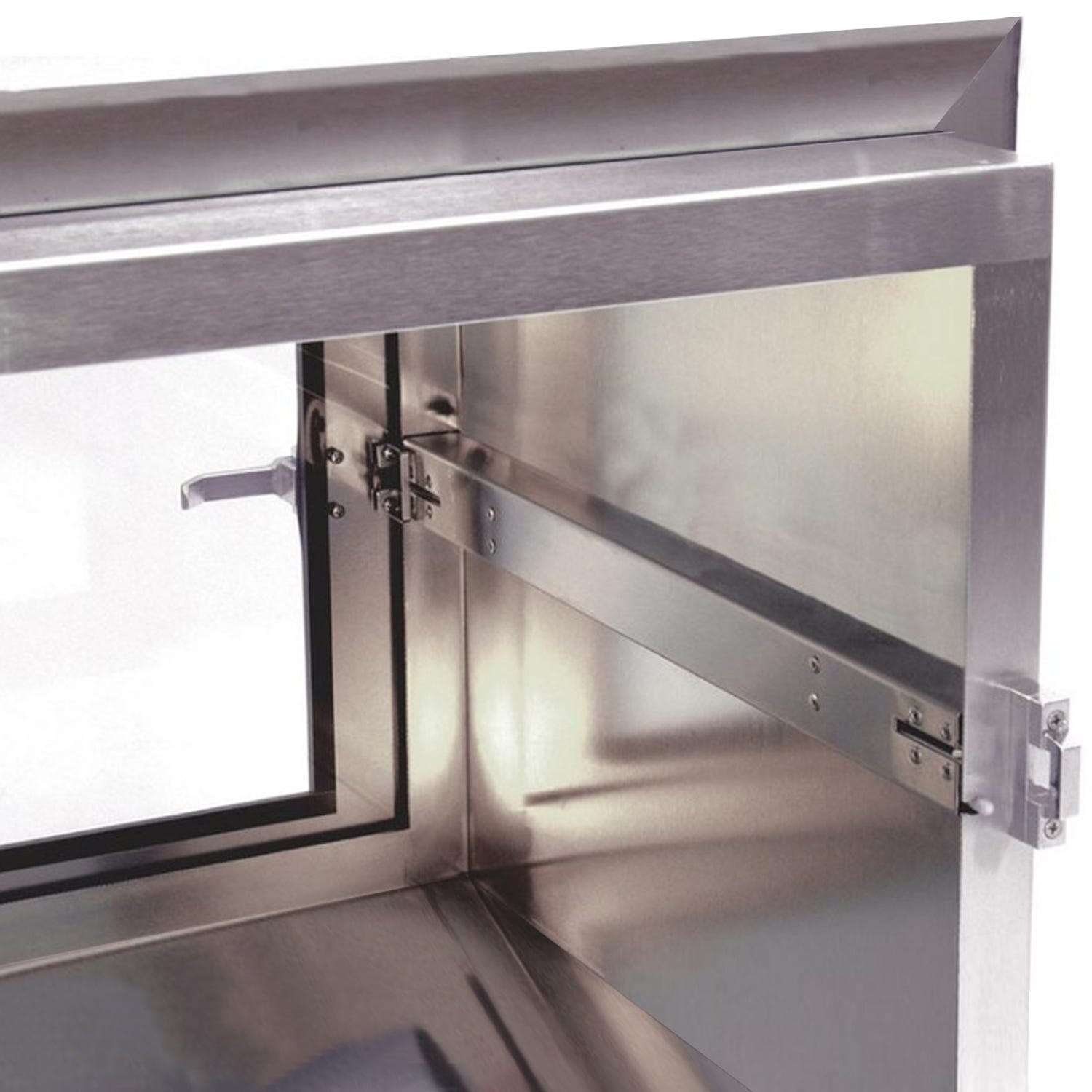
Conventional automatic mechanical interlocks
are mounted inside the chamber and use a hook/latch
mechanism
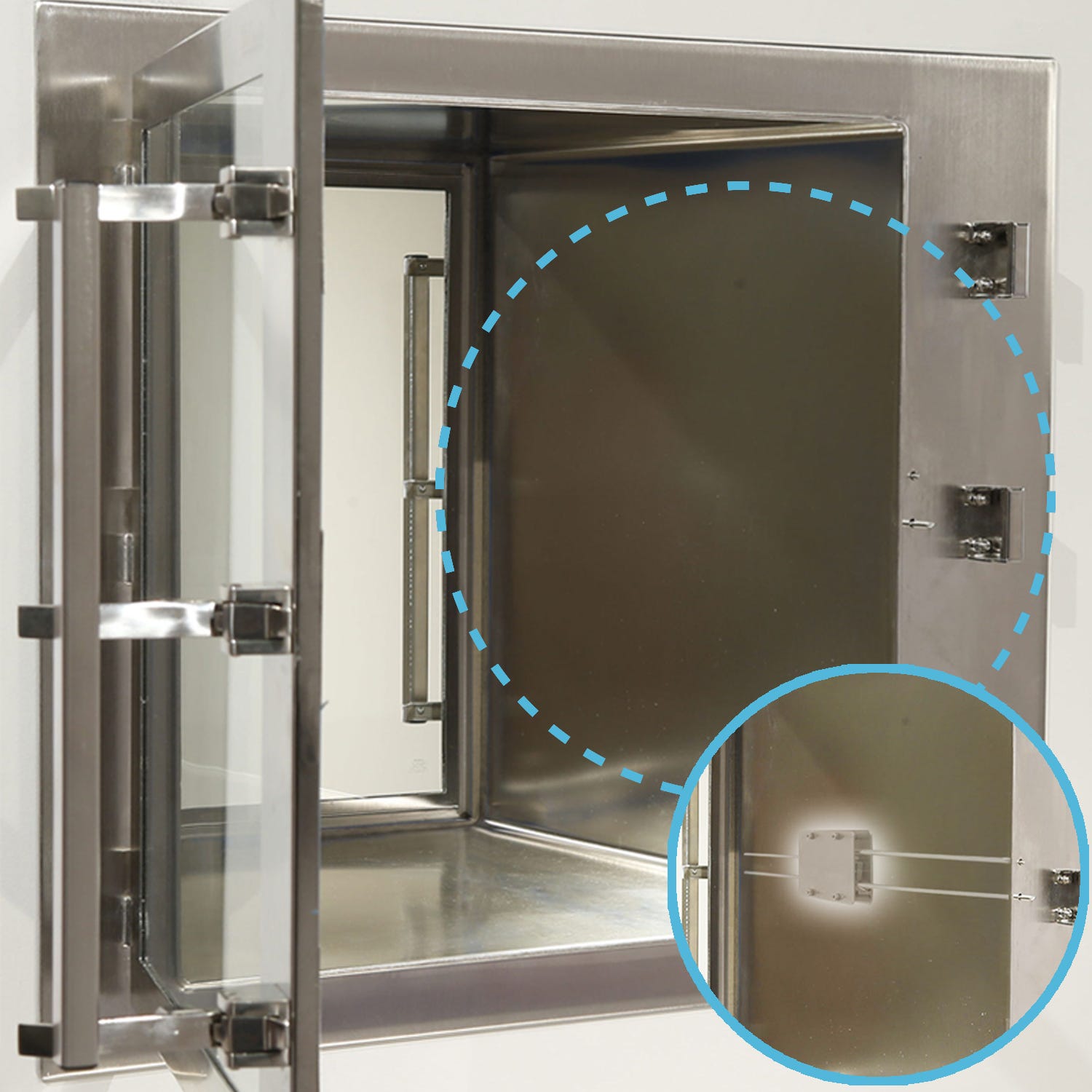
Isolated automatic mechanical interlocks
are concealed behind the chamber for sterile
applications and use an even stronger mechanism
to firmly lock doors
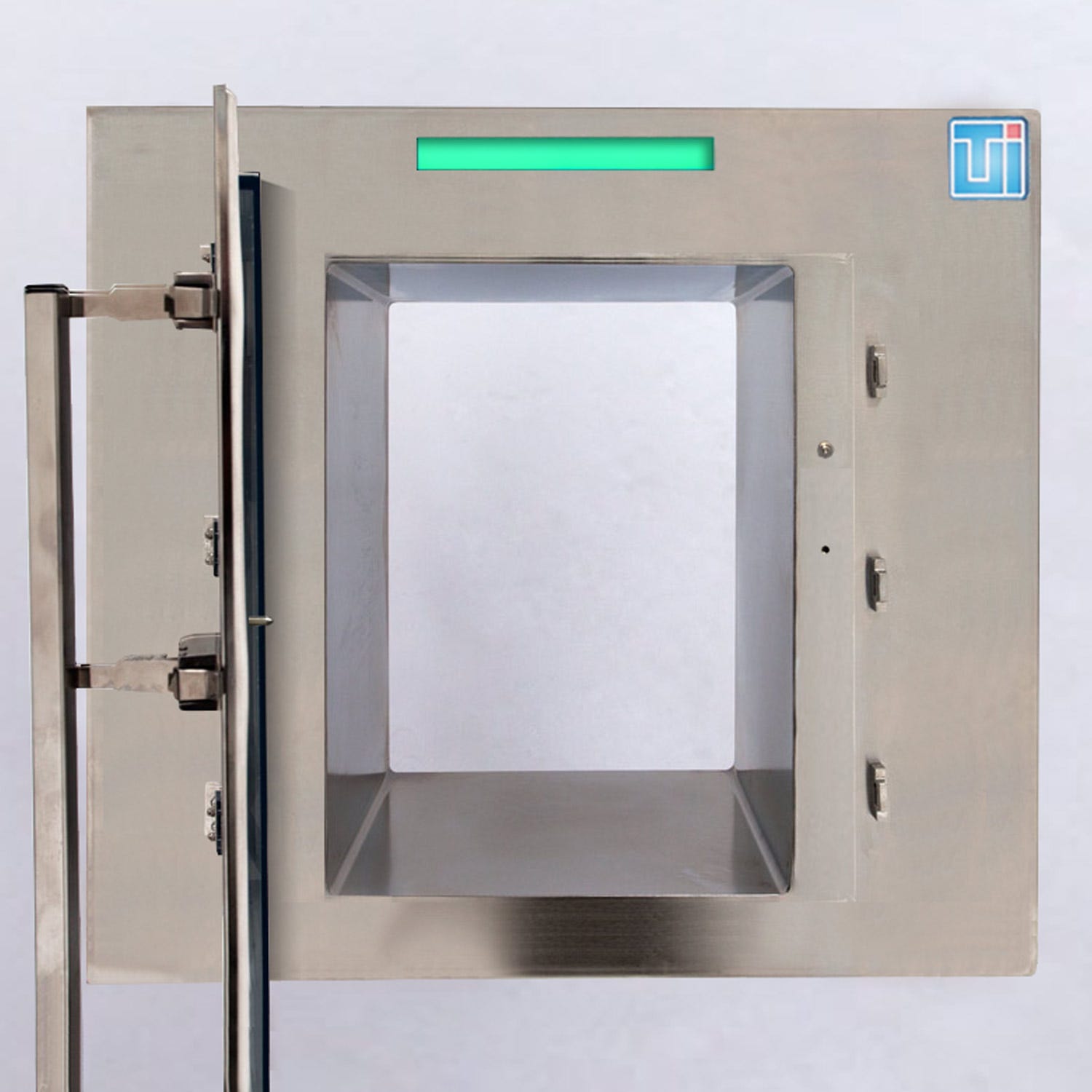
Electronic automatic interlocks are also concealed
(ideal for sterile applications) and provide
audio/visual alerts when doors are left open
How are cleanroom pass throughs installed?
Terra’s ValuLine™ cleanroom pass thru windows and general-use pass through cabinets use retaining brackets to hold the chamber to the wall. The bracket on the clean side is welded to the chamber. The one on the opposing side slides onto the chamber and fastens to the wood or metal framing that surrounds the wall cut-out. The screws mounting these chambers penetrate the cleanroom wall.
Terra’s CleanMount® pass through cabinets use a unique clamping system that requires no hardware or fasteners to penetrate the cleanroom walls and mounts in just a few minutes. As long as the wall cut-out is finished and sealed, you can quickly install or remove the pass thru cabinet without a costly cleanroom shutdown and re-validation.
To perform maintenance without contaminating a classified space, you first seal off the “dirty side” with plastic sheeting to maintain the positive-pressure differential. Loosening two lag bolts lets you lift the pass through out of the wall without contaminating the room. Once out, the pass through can be serviced, modified, or even replaced with an upgraded version to accommodate new applications.
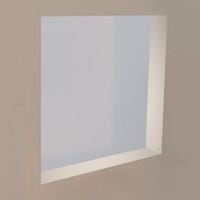
Finish cut-out framing eliminates the need for
shut-down during installation or servicing
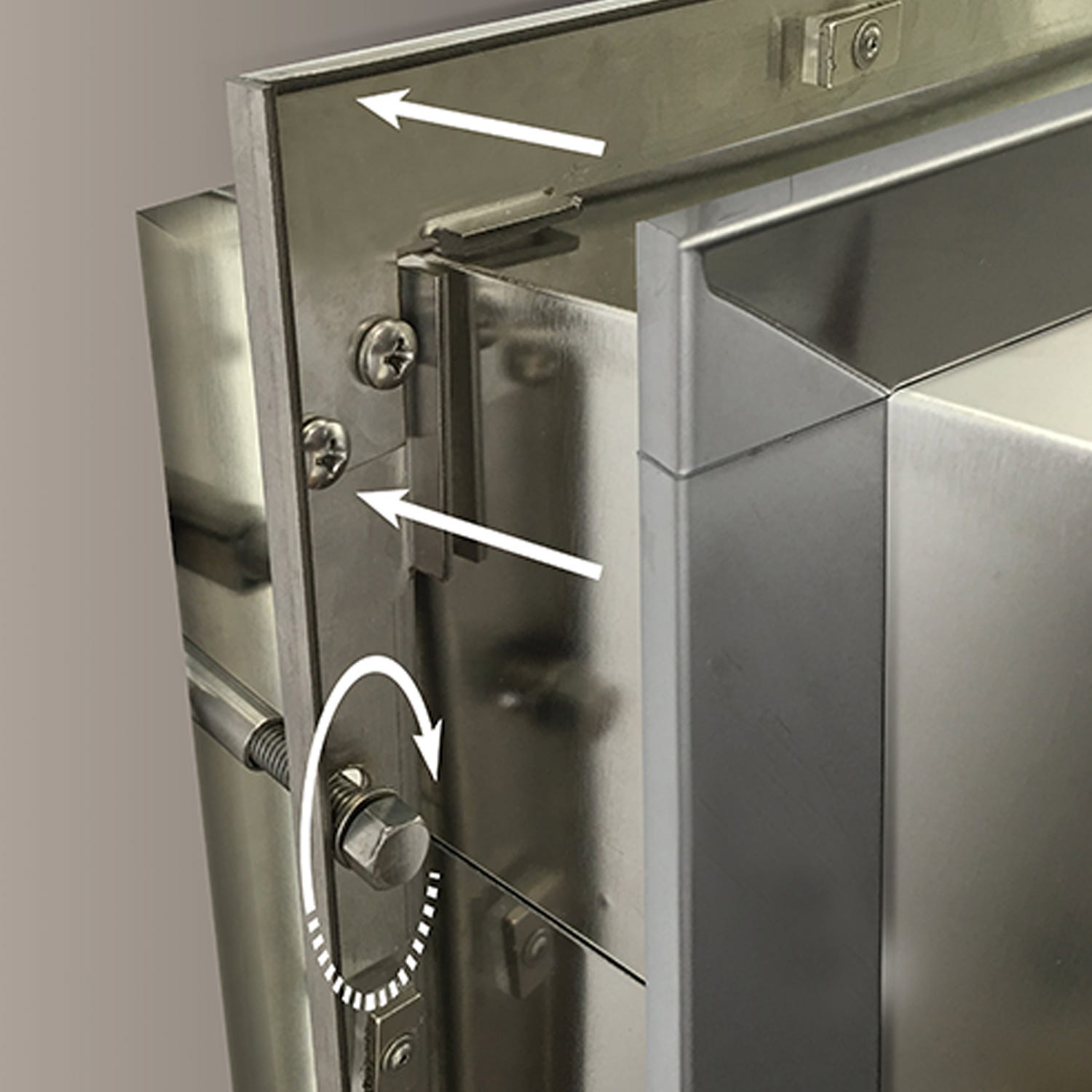
Terra's CleanMount® system installs in under five minutes,
regardless of wall thickness, and without contamination
What type of mounting options are available for cleanroom passthrough cabinets?
Terra offers both flush mount and center mount cleanroom pass box designs. The CleanMount® system mounts flush against the cleanroom wall to minimize particle accumulation and simplify cleaning. Flush-mount chambers protrude into the “dirty” side room and can be braced with support brackets if needed. Alternatively, chambers can be specified for center-mounting in nearly any wall thickness. Electronic pass through cabinets can even be specified with access doors on adjacent corner walls with a 90 degree pass thru cabinet design. These designs can also be specified mounted to the floor as a cleanroom cart pass through to efficiently roll through materials or large equipment.
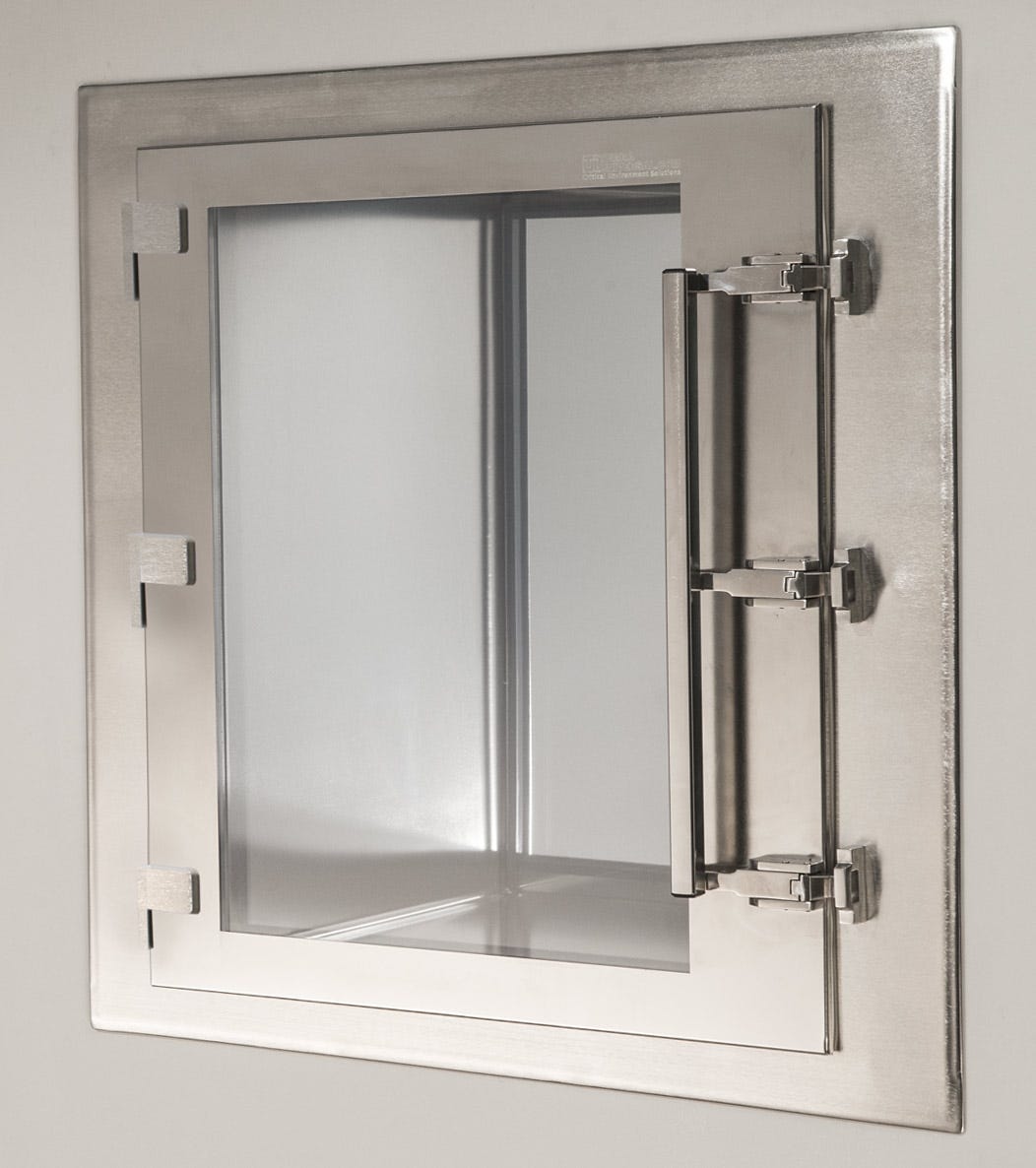
Flush-Mount Installation
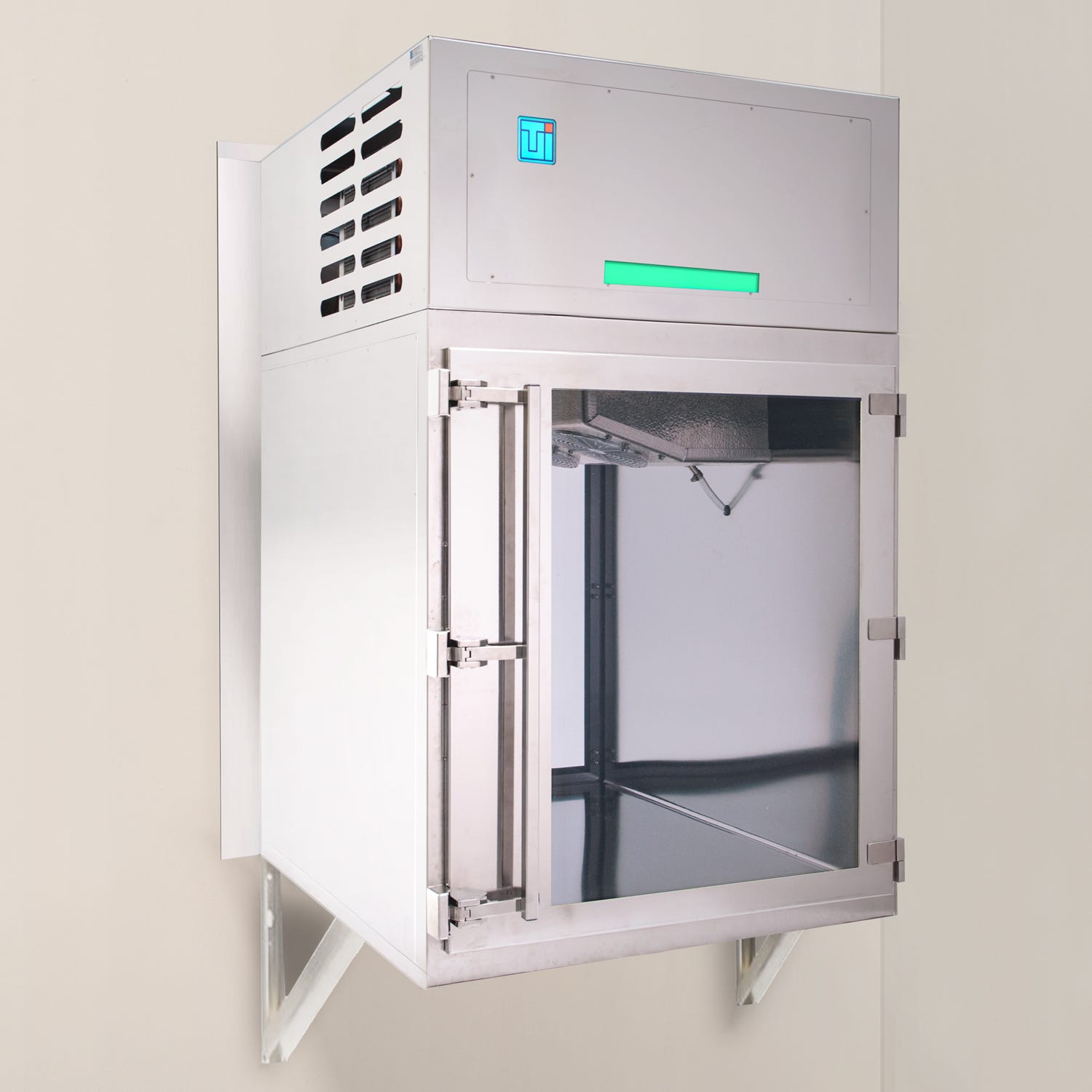
Pass through with refrigeration module extending into “dirty” side, with support braces
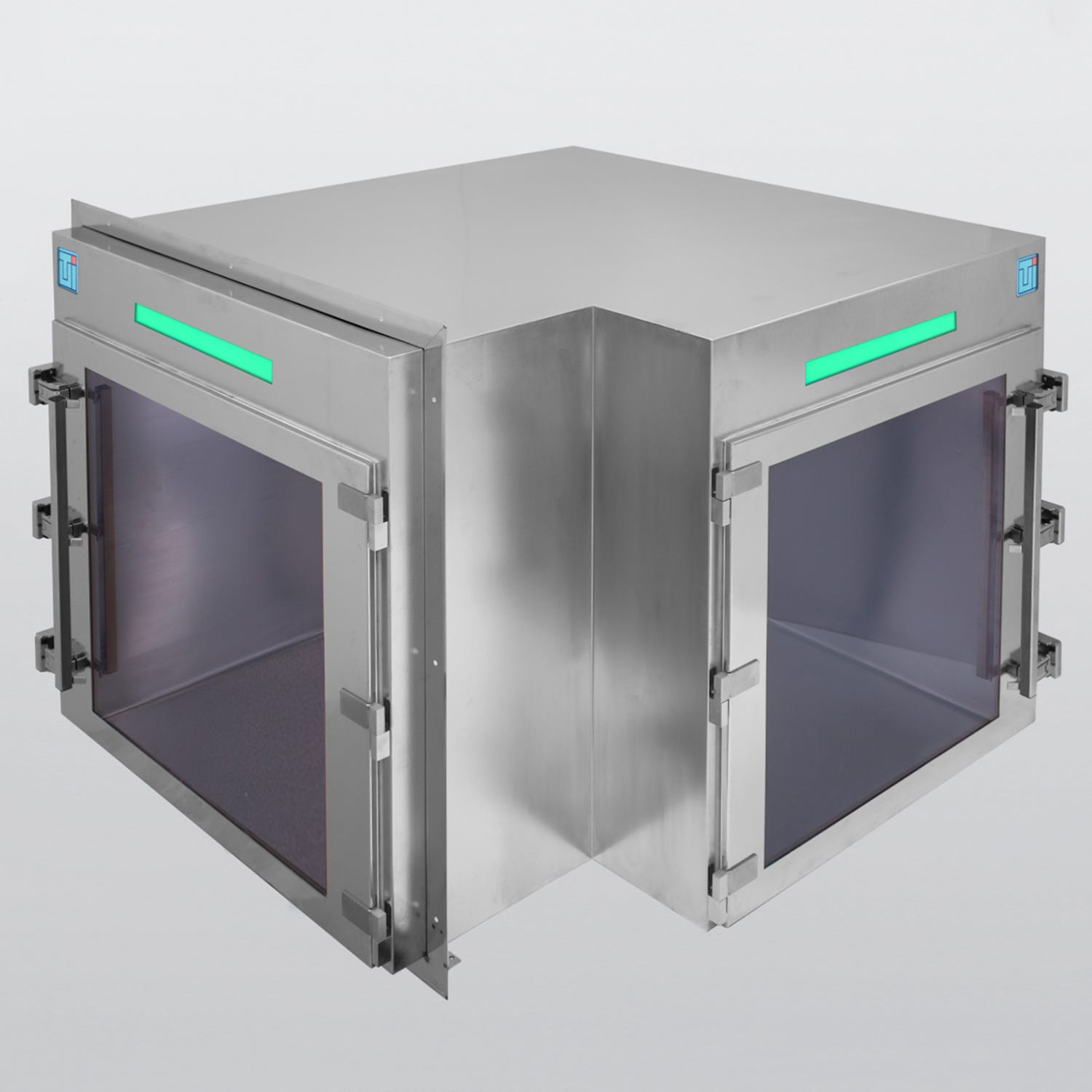
Smart pass through for corner-wall installation
What makes a pass through cabinet suitable for sterile applications?
Weld construction is an important consideration for sterile applications. Tack welded or stitch welded stainless steel pass thrus are easier to build and lower cost, however the non-continuous intermittent welds leave hard-to-clean cracks and crevices that can harbor germs and other contaminants. This makes chambers with partially welded interiors unsuitable for sterile operations and other applications with strict cleaning protocols.
A fully-welded stainless steel pass through box has continuous seam welds and smooth, formed radius corners. This improves cleanliness and simplifies wipedowns by removing any cracks or crevices for particles and microbes to collect.
All CleanMount® pass throughs feature continuous seam welds with smooth, coved corners for a seamless interior that is easy to clean and sterilize. Doors feature a lift-off design for easy removal and cleaning, and 304 or 316L stainless steel surfaces stand up to common cleaning agents, including IPA. Terra’s ergonomic LiftLatches operate without metal-on-metal scraping inside the chamber, a common source of contaminants with rotary-style latches.
For the most demanding sanitary applications, specify Terra’s BioSafe® pass through, which includes an autoclavable doors with blue elastomeric door seals. BioSafe® pass throughs also feature a fully welded body with coved radius corners and knife-edge hatch openings. All chambers can be electropolished upon request.
Read more on the benefits of BioSafe® pass through chambers.
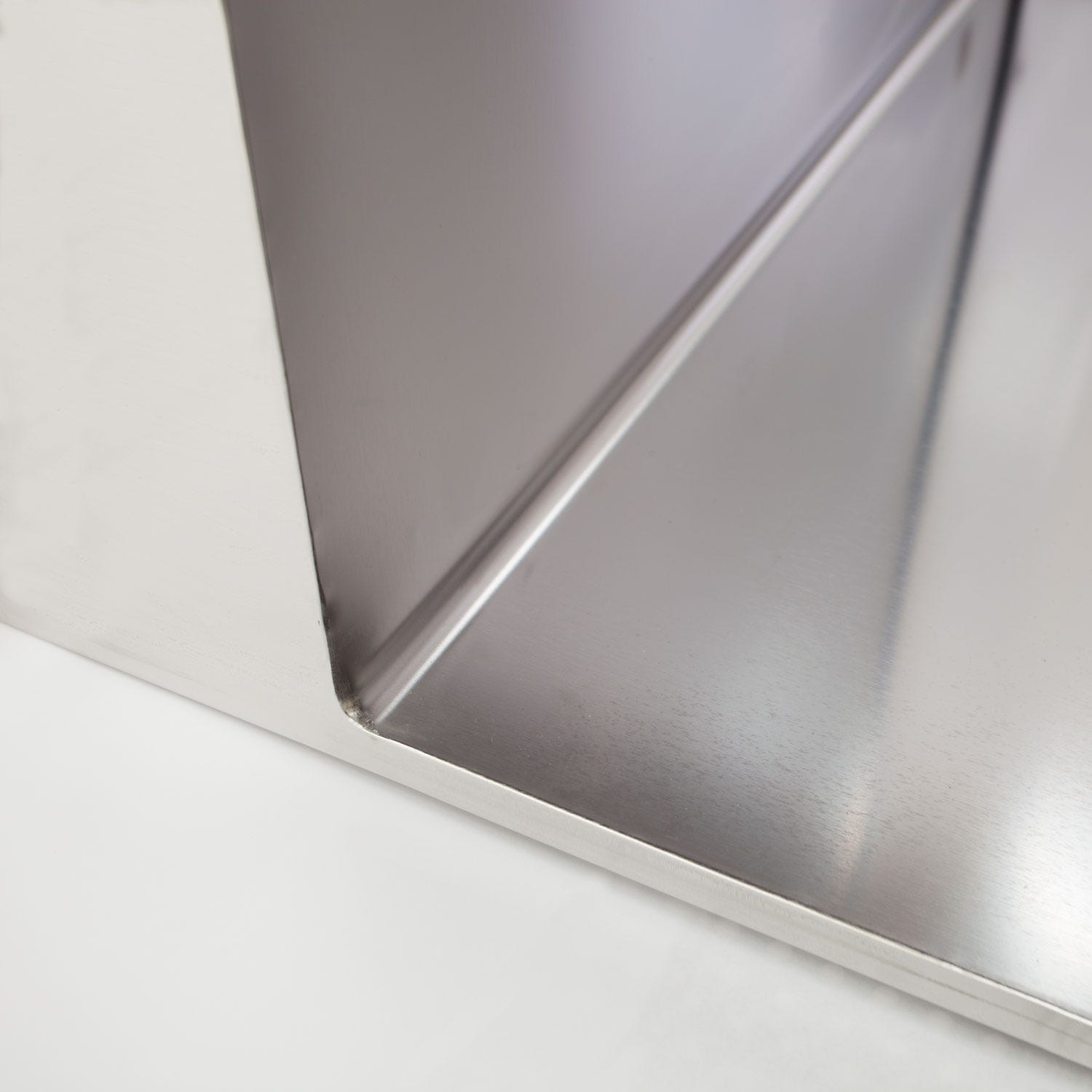
CleanSeam™ continuous seam welds eliminate hard to clean
cracks and crevices inside the passthrough chamber
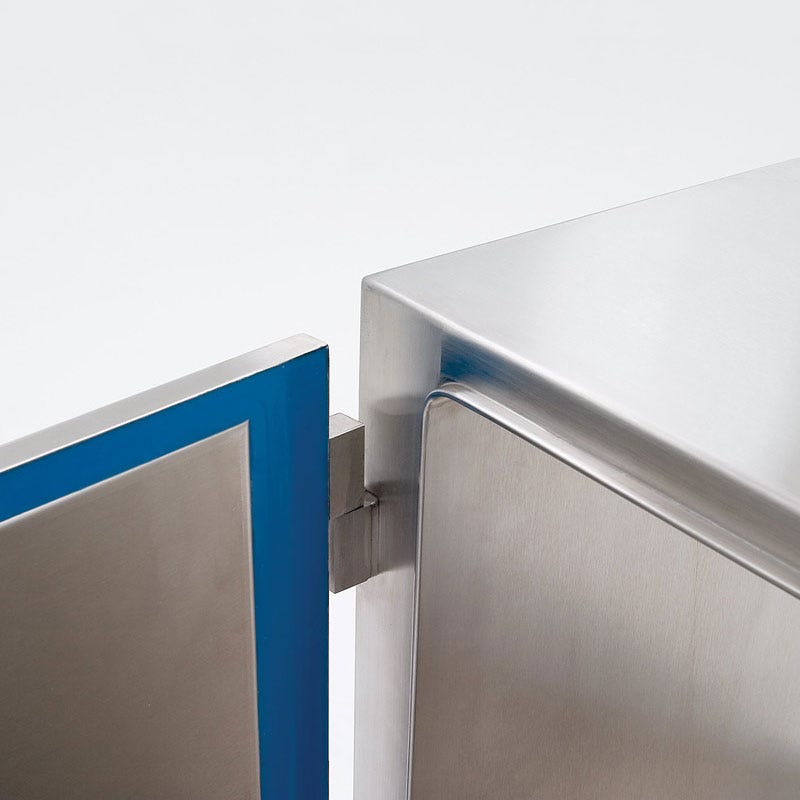
BioSafe® autoclavable doors feature high-performance blue
elastomric door seals that compress along the chambers
knife-edge perimeter for a tight seal
How can you extend the service life of your pass through chamber?
Specify replacement doors, for the same reason you carry a spare tire in your car for a flat tire. Terra's pass through chambers can last indefinitely with proper maintenance. Unfortunately the doors are sometimes damaged by users unintentionally mishandling and applying excessive force. This is even more common in high traffic areas such as hospitals. Ordering a replacement door after the pass through chamber is out of service can cause costly disruptions to your cleanroom or lab operations. To avoid these problems, proactively order replacement doors at the time you purchase the pass through chamber; simply add "-RH" (for right-side hinge) or "-LH" (for left-side hinge) to the part number of the chamber.
How else can you increase productivity with a cleanroom pass through?
Terra offers several cleanroom pass through accessories to increase productivity and automate processes that would otherwise be done manually:
- Easily tie Smart® passthrough cabinets into your building management system (BMS). Use access control software for remote control, monitoring and automatic recording of user access data.
- Terra’s electronic interlock system is wirelessly connected and IP-addressable, making it suitable for remote controlled lock-downs for planned maintenance or in an emergency. Scalable software allows upgrades for growth with additional material access points and increased personnel.
- Configure a barcode stock control system to improve inventory management and control. Speed up the process of receiving materials and obtain a more accurate count of what’s on hand with immediate updates to your database.
- Add load presence sensors to trigger a video camera feed or issue audible or visual alarms to alert staff materials are ready for pick-up.
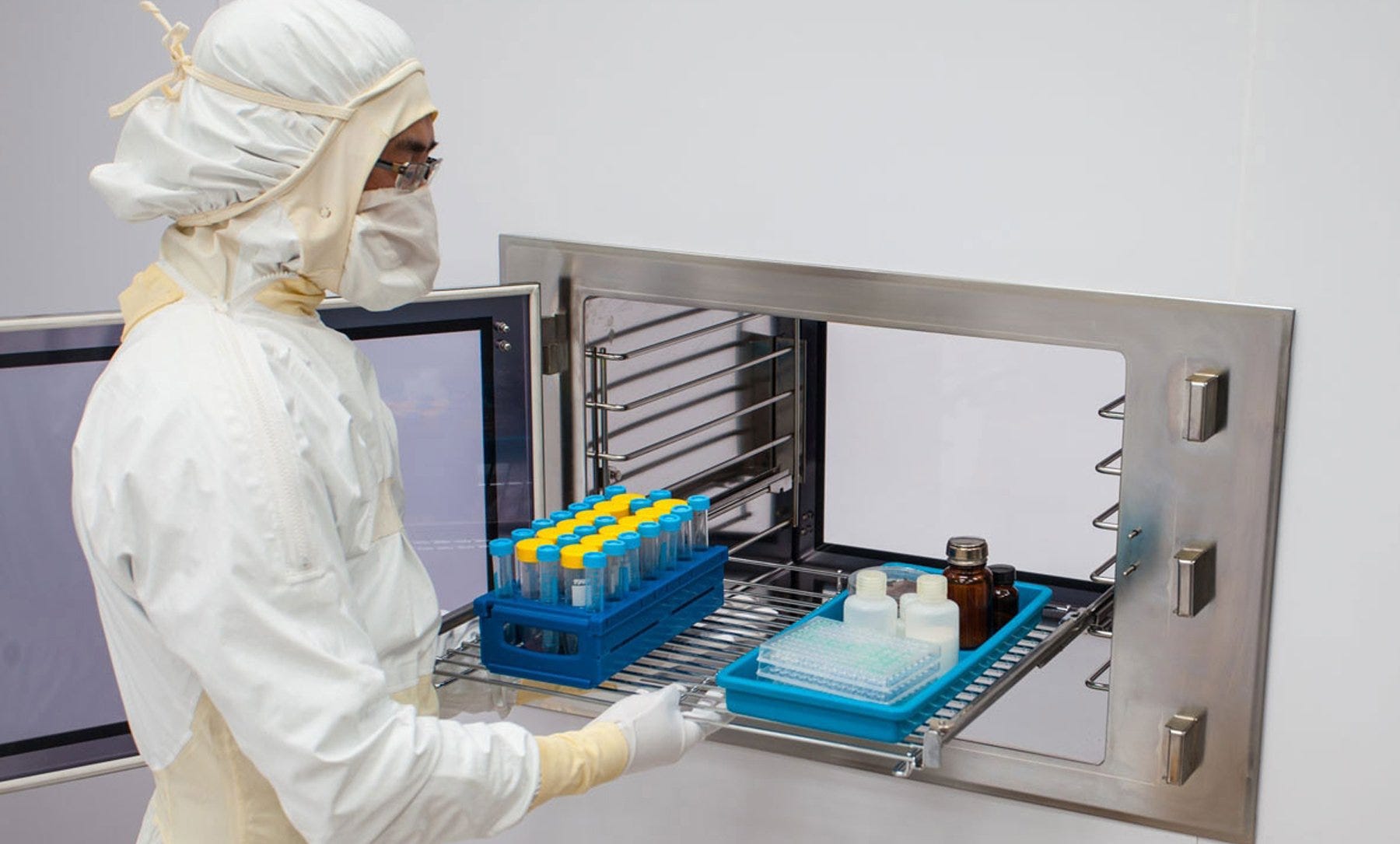
- Built-in storage racks with slide out shelves increase storage capacity and facilitate transferring and organizing of small parts. BioSafe® shelf racks are ideal for bio/pharmaceutical and other aseptic processing. They can be removed and reattached in seconds, allowing easy cleaning and sterilizing of both rack and chamber
- Specify floor-mounted cart pass thru cabinets for transfer of carts, bulk material containers, and other large equipment. Roll up pass through chambers are available with durable segmented aluminum for increased security, or high-speed fabric roll-up doors for quick access.
Do cleanroom pass throughs meet UL requirements for fire-rated walls?
Fire-rated pass through cabinets help protect your personnel, equipment, and facility by maintaining the integrity of your facility’s certified fire-rated wall. Terra offers several fire-rated pass thru chamber configurations with doors that bear the UL-10B label for 90-minute fire exposure, suitable for a 2-hour fire wall rating. Models are available with and without viewing windows, on all designs (ValuLine™, CleanSeam™, CleanMount®, BioSafe®, Smart®), and in chamber sizes up to 33”W x 36”D x 45”H. The default design includes a fire-rated door on one side of the chamber, and a standard non-fire-rated door on the opposite side. They can be customized to include fire-rated doors on both sides of the chamber.
What are the benefits of 316 stainless steel pass through cabinets?
304 stainless steel is one of the most common types of stainless steel used in the clean room industry although it can be problematic for some applications that use corrosive chemical cleaners like bleach. Chlorides can degrade stainless steel, causing pitting corrosion. Pitting sheds contaminating particles and creates crevices where microbes can accumulate.
316 stainless steel contains more nickel and molybdenum than 304, which enhances its resistance to pitting corrosion in wet environments, and also from harsh chemicals used in cleaning agents. 316 stainless steel is also more resistant than 304 stainless steel for high-temperature sanitation processes. For this reason, 316 stainless steel is ideal for any application with exposure to harsh chemical cleaners or severely corrosive environments which 304 stainless steel cannot withstand. Terra Universal offers pass thru box designs with 316L stainless steel, a low-carbon variant of the standard 316 alloy, for even higher resistance to corrosives.
Read more on the benefits of 316 stainless steel.
How else can you protect sensitive samples from contamination?
For biological applications, a UV-C sterilization lamp with safety circuit kills or neutralizes microbes, including viruses and mold spores, before sample transfer into a sterile lab.
Pass through chambers can also be configured as air locks to reduce the likelihood of cross contamination by lowering particle counts inside the passthrough. A pass thru air lock can be ventilated using positive pressure, negative pressure, or recirculation.
A pass thru cabinet with passive ventilation has no additional air supply and relies on the pressure cascade from the cleanside to provide air flow through the enclosure. Terra can install ULPA filters on one or both sides for filtered leakage paths to inhibit the passage of contaminants.
Active ventilationA pass thru cabinet with active ventilation (or dynamic pass through box) has a dedicated air supply connected to the chamber for added protection. They fall into three categories: supplied (positive pressure), exhausted (negative pressure), and internally recirculated (negligible pressure change). Note that both positive and negative pressure configurations can affect adjacent room pressure balances and should therefore be accounted for accordingly in cleanroom airflow designs.
A cleanroom pass through box with supplied ventilation provides a single pass (open loop) supply of filtered air. This creates a clean positive pressure environment and prevents particles from entering the chamber. These pass through chambers can be configured to include an exhaust filter or duct collar to send excess air to the building air-handling system or adjacent unclassified room.
HEPA filtered air shower pass throughs can be configured for positive pressure. These units use high velocity jets of HEPA filtered air to help decontaminate equipment prior to entering or exiting a cleanroom. The supply fan turns on when one door is opened and stays on for a user specified duration after the door is closed.
Exhausted ventilation (negative pressure, open loop)A cleanroom pass through chamber with exhausted ventilation (also known as a sink airlock) provides a single pass (open loop) supply of exhausted air. This extraction system creates negative pressure to prevent particles from escaping the chamber from either door. This design can be used for applications where hazardous materials or particulates must be contained and kept from passing through either side of the chamber. Ventilation units can also be used to duct fumes that might be present in a specimen, allowing the pass through to act as a drying system. Specify a flange adapter to allow connection from the pass through chamber to an in-house ventilation system. Exhaust air speed sensors can also be configured for added safety to alarm in the event air speed falls below a specified setpoint.
Internally recirculated filtration (closed loop)Recirculated pass thrus use a closed loop system to continuously recirculate air in the chamber through built-in HEPA or ULPA filters. These clean air pass thrus are self-contained and do not require any ventilation or exhaust ducting. They run continuously to reduce particle concentration within the chamber. This design is commonly used because the closed-loop system does not impact adjacent room pressure balances when operating.
With heavily mandated cleanliness requirements associated with USP 797 and USP 800 cleanrooms, a pharmacy pass thru is a vital point for sterile pharmaceutical compounding. Terra’s HEPA filtered pass through and Smart HEPA filtered pass thru use recirculating ventilation to meet and exceed USP 797 and USP 800 guidelines.
How else can you protect from unauthorized access?
Terra offers many innovative solutions to protect specimen inside a cleanroom transfer hatch from theft or unauthorized access:
- A key card reader for your cleanroom pass through window provides additional protection during sensitive material transfer and storage by securing and limiting chamber access.
- A fingerprint scanner for your pass through offers biometric security for an added layer of protection.
- Iris scanners installed to a cleanroom pass box offer convenient hands-free biometric security.
- Video camera devices offer 24/7 visual surveillance, providing an additional level of security for sensitive material transfer.
- A customizable LCD message panel conveniently displays environmental data and operating status relevant to your workflow.

Can't find what you're looking for?Tell us what you need and we'll build it!




